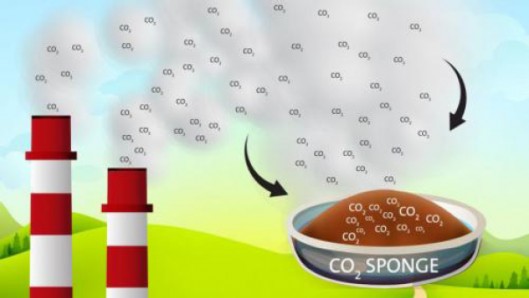
Hydrogen may hold promise as an alternative to fossil fuels, but there's still a huge petrol-producing infrastructure in place, and not many service stations offer hydrogen refills yet. That's why some scientists are exploring a bridging technology known as the integrated gasification combined cycle (IGCC) process, for converting fossil fuels into hydrogen. Along with hydrogen, though, carbon dioxide is also a byproduct of the IGCC process, which must be dealt with. Fortunately, scientists from the University of Liverpool have developed a polymer that soaks up that CO2 for use in other applications.
 Hydrogen may hold promise as an alternative to fossil fuels, but there's still a huge petrol-producing infrastructure in place, and not many service stations offer hydrogen refills yet. That's why some scientists are exploring a bridging technology known as the integrated gasification combined cycle (IGCC) process, for converting fossil fuels into hydrogen. Along with hydrogen, though, carbon dioxide is also a byproduct of the IGCC process, which must be dealt with. Fortunately, scientists from the University of Liverpool have developed a polymer that soaks up that CO2 for use in other applications.
Hydrogen may hold promise as an alternative to fossil fuels, but there's still a huge petrol-producing infrastructure in place, and not many service stations offer hydrogen refills yet. That's why some scientists are exploring a bridging technology known as the integrated gasification combined cycle (IGCC) process, for converting fossil fuels into hydrogen. Along with hydrogen, though, carbon dioxide is also a byproduct of the IGCC process, which must be dealt with. Fortunately, scientists from the University of Liverpool have developed a polymer that soaks up that CO2 for use in other applications.
The adsorbent organic polymer is described as being brown and sand-like, and consists of a linked network of carbon-based molecules. Its creation was inspired by polystyrene, which is able to adsorb small amounts of CO2 from the atmosphere. The new polymer likewise adsorbs CO2 but does so much more effectively, swelling up to contain the carbon dioxide in "micropores" between its molecules.
This swelling/adsorbing action takes place when the material is exposed to high-pressure environments, such as would be experienced in the IGCC process. When the pressure subsequently drops to normal levels, however, the polymer releases the CO2. The gas could then be harvested for use in carbon-based chemical products.
Along with its application in IGCC, the polymer could conceivably also be used to help "scrub" carbon dioxide from smokestack emissions. While other materials are already used for this purpose, the polymer should be particularly well-suited to it. This is largely because unlike some of those other materials, it doesn't adsorb water vapor. Doing so would clog its pores, thus making it less effective.
It's also said to be relatively inexpensive to produce, plus it's very robust – it's reportedly able to retain its functionality after being "boiled in acid."
The researchers' findings were presented today in San Francisco, at the 248th National Meeting & Exposition of the American Chemical Society.

 Previous page
Previous page Back to top
Back to top







